Introduction
Solar pumps are a sustainable and cost-effective solution for irrigation, water supply, and various other applications. However, to ensure they operate efficiently and last as long as possible, regular maintenance is crucial. This article shares essential tips and best practices for maintaining your solar pump system.
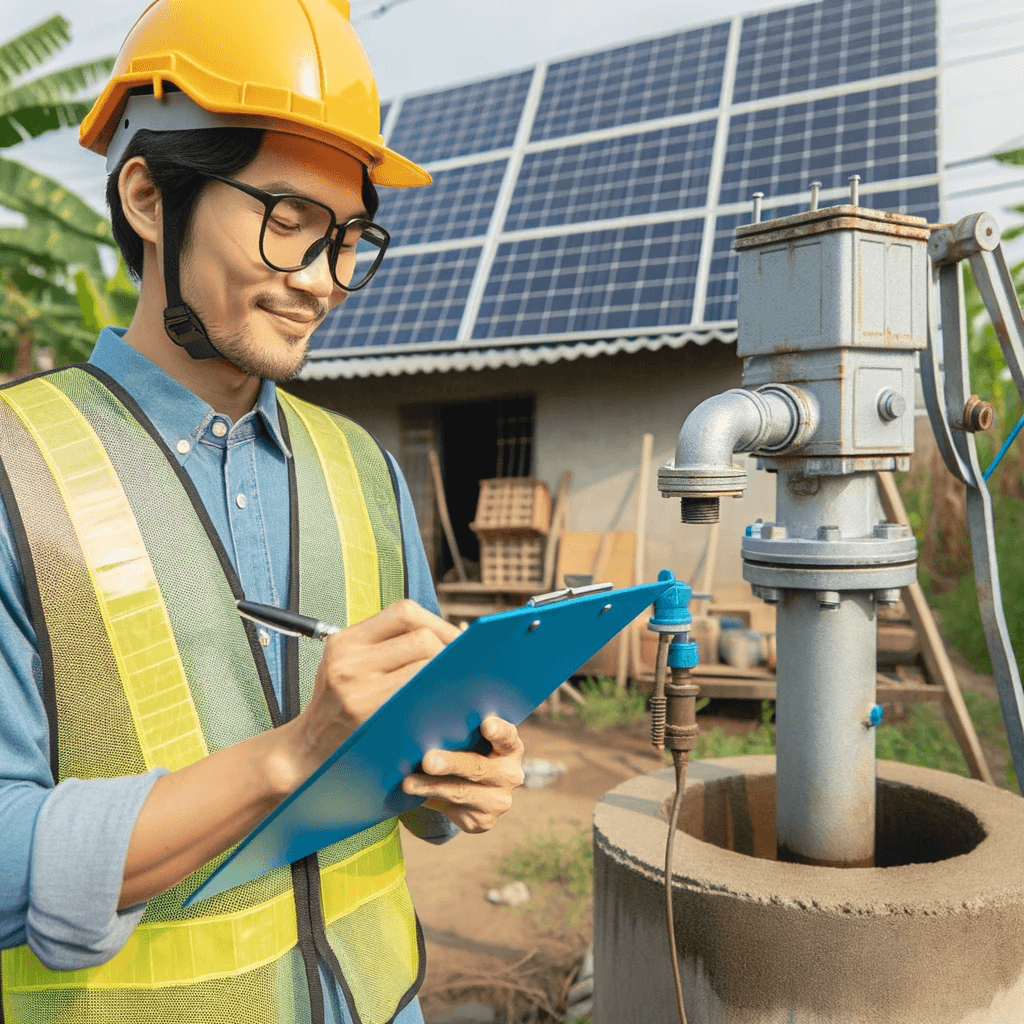
Regular Cleaning and Debris Removal
Just as with solar panels and inverters, solar pumps require regular cleaning to maintain optimal performance. Dust, dirt, and other debris can accumulate on the solar panels that power these pumps, reducing their efficiency. It’s essential to clean these panels periodically, especially in dusty or bird-populated areas. Use water and a soft brush to gently clean the surface without damaging the panels.
Panel Cleanliness
The performance of solar panels directly influences the efficiency of solar pumps. Panels covered in dust, dirt, or bird droppings have a reduced capacity to absorb sunlight, which can significantly decrease the energy generated and, consequently, the pump’s performance. This is particularly crucial in areas with high dust levels or bird activity.
Cleaning Methodology
- Frequency: The cleaning frequency should be adjusted based on the environment. In areas with high dust, pollen, or frequent bird droppings, more frequent cleaning is necessary. A monthly inspection is recommended to determine if cleaning is required, with at least a bi-annual cleaning schedule in most regions.
- Materials: Use water and a soft brush or cloth for cleaning. The use of soft materials ensures that the panel surface is not scratched or damaged during the cleaning process. Avoid abrasive materials and harsh chemicals that could damage the panel’s protective coating or leave residues that might affect performance.
- Procedure: Gently rinse the solar panels with water to remove loose debris. Use a soft brush or cloth to gently wipe the surface. For panels that are hard to reach or installed at a height, a telescopic cleaning brush can be useful. Alternatively, consider hiring professionals for safe and effective cleaning, especially for large installations or difficult-to-access areas.
- Safety Considerations: When cleaning solar panels, safety should be a priority. Ensure that the cleaning is done during cooler parts of the day, such as early morning or late afternoon, to reduce the risk of heat stress or burns from hot panels. Always use appropriate safety gear and consider the risks of working at heights.
Monitoring and Inspection
Besides cleaning, regular monitoring and visual inspections of the solar panels and the pump system can help identify issues such as shading from new obstructions, physical damage to the panels or wiring, and other potential problems that could affect performance. Keeping an eye on the system’s output through monitoring tools can also indicate when maintenance tasks, like cleaning, might be needed to restore optimal function.
System Inspection and Monitoring

Routine inspections are vital to detect and address any potential issues early. Check for signs of wear and tear, corrosion on the wiring and components, and ensure all connections are secure. Additionally, monitoring the pump’s performance can help identify any drop in efficiency, signaling that maintenance or repairs may be necessary. Some solar pump systems come with monitoring technology that provides real-time data on performance and alerts for any anomalies.
System Inspection
Regular inspection is a cornerstone of maintaining any solar-powered system, including solar pumps. Here are detailed steps and considerations:
- Visual Inspection: Regularly inspect the solar panels, pump, and associated components for any signs of physical damage, such as cracks, discoloration, or water ingress. The mounting system should also be checked for any loose or damaged parts that could affect the stability or orientation of the panels.
- Electrical Components: Carefully examine all wiring and electrical connections for signs of wear, corrosion, or loosening. Ensuring that connections are secure and in good condition is crucial to prevent power losses and potential safety hazards.
- Pump and Pipes: For the pump itself, look for any signs of leakage or unusual noise during operation, which could indicate mechanical issues. Additionally, inspect the pipes and fittings for leaks, blockages, or damage.
- Environmental Factors: Assess the installation site for any changes in the environment that could impact performance, such as new shading obstacles, vegetation growth, or debris accumulation that might restrict airflow or sunlight.
Monitoring System
Leveraging technology for monitoring can significantly enhance the maintenance and performance of solar pumps. Consider these monitoring strategies:
- Performance Tracking: Utilize a monitoring platform that provides real-time data on the pump’s operation, including water flow rates, solar energy utilization, and system efficiency. This data can help identify trends, such as decreases in performance that may signal a need for maintenance or adjustments.
- Energy Production: Regular checks on the energy production of the solar panels will indicate if they are performing optimally. Any consistent discrepancies in expected versus actual energy production could highlight issues like shading, dirt accumulation, or component degradation.
- Remote Monitoring: Advanced systems offer remote monitoring capabilities, allowing for the tracking of system performance from a distance. This can be particularly useful for large installations or systems located in remote areas, enabling timely identification and response to any issues.
- Alerts and Alarms: Set up alerts for critical parameters, such as low water flow, high temperature, or reduced energy production. These alerts can prompt immediate inspection and action, preventing minor issues from escalating into significant problems.
Environmental Protection
Protecting your solar pump from environmental factors is crucial. If installed outdoors, ensure the pump and its components are designed for the environment, capable of withstanding temperature variations, moisture, and potential physical impacts. For areas prone to flooding or heavy rains, consider elevated installations to prevent water damage.
Protecting Against Weather Elements
- Direct Sunlight and Heat: While solar panels thrive under sunlight, the electronic components of solar pumps, like those in inverters, are susceptible to overheating. It’s essential to ensure that any non-photovoltaic parts of the system, including the pump mechanism, are shielded from direct sunlight or, if outdoors, are designed to withstand high temperatures.
- Rain and Moisture: Moisture ingress can severely damage the pump’s electrical components. If the pump is installed outdoors, ensure it has waterproof enclosures or covers that protect against rain and splashing water, similar to how outdoor inverters are shielded.
- Dust and Debris: In dusty environments, dust accumulation can impair the pump’s function and lead to overheating. Utilizing protective covers or installing the pump in a location that minimizes dust exposure is crucial. Regular cleaning to remove any accumulated dust is also essential for maintaining optimal performance.
Temperature Extremes
Solar pumps, much like solar inverters, must be capable of operating across a range of temperatures. Employing pumps with a wide operational temperature range ensures that they can handle the temperature extremes of their installed environment, whether it’s the freezing cold or scorching heat. For regions with severe temperature fluctuations, considering thermal insulation or ventilation for the pump’s housing can provide additional protection.
Physical Protection
- Impact Resistance: The pump and its components should be robust enough to withstand physical impacts, such as those from falling branches or debris, especially in storm-prone areas.
- Vandalism and Theft: Depending on the installation site, protective measures against human tampering, vandalism, or theft may be necessary. This could include installing the pump and its components in locked enclosures or within secured premises.
Custom Solutions for Unique Environments
Each installation environment presents unique challenges. For coastal areas, salt mist corrosion is a concern, requiring components that are resistant to corrosive environments. In agricultural settings, the presence of chemicals or animal waste might necessitate specialized materials that can resist these aggressive substances.
Professional Check-ups
While regular user maintenance is essential, scheduling professional check-ups can help ensure your system is in top condition. A certified solar technician can perform a comprehensive evaluation of the pump, panels, and electrical connections. They can also provide specialized cleaning, update firmware, and make any necessary adjustments to improve efficiency and prolong the system’s life.
What to Expect During a Professional Check-up
- Electrical and Mechanical Inspection: A comprehensive check of both the electrical systems, including the solar panels, batteries (if applicable), and wiring, as well as the mechanical components of the pump itself. This involves looking for any signs of wear and tear, corrosion, or damage that could impact performance.
- System Performance Analysis: Professionals will assess the pump’s flow rate, energy consumption, and overall efficiency to ensure it meets the expected performance standards. Discrepancies can indicate underlying issues such as clogged filters, mechanical faults, or misalignments in the solar array.
- Cleaning and Calibration: Beyond the cleaning that can be done by the system owner, professionals can perform more thorough cleaning of hard-to-reach areas and calibrate sensors and controllers to ensure accurate operation.
- Firmware and Software Updates: If the pump system includes smart monitoring devices or controllers, a professional can ensure that all software is up to date, which is essential for optimal performance and security.
- Recommendations for Improvements: Based on their findings, professionals might recommend upgrades or changes to improve efficiency, such as adjusting the tilt of solar panels, upgrading components, or changing the pump’s location to avoid shading.
Scheduling Professional Check-ups
The frequency of professional check-ups can depend on several factors, including the environment in which the solar pump operates, the system’s complexity, and the manufacturer’s recommendations. As a general guideline, scheduling a professional inspection annually or bi-annually is advisable. However, in environments with harsh conditions or for systems that are critical to operations, more frequent check-ups may be warranted.
Preventative Maintenance
Preventative maintenance is about addressing potential issues before they become major problems. This includes:
- Replacing worn-out parts before they fail.
- Ensuring the solar panels are correctly aligned for optimal sun exposure.
- Checking and cleaning filters in the pump to prevent blockages.
- Updating system software to ensure compatibility with all components.
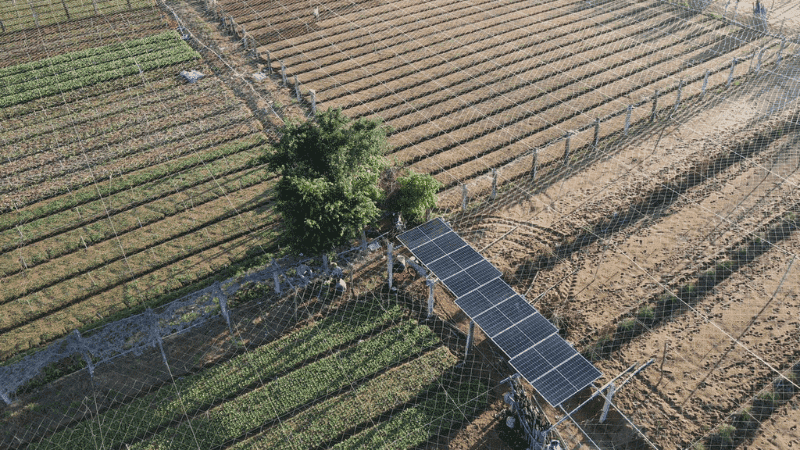
Conclusion
Maintaining your solar pump system is not just about preserving its functionality but also about maximizing efficiency and extending its lifespan. By following these best practices, you can ensure that your solar pump continues to provide reliable service while contributing to sustainability and energy independence. Remember, the key to a long-lasting solar pump system lies in regular care, monitoring, and professional support.
Solar Pump Regular Maintenance FAQ
How often should I clean my solar pump system?
A: It’s recommended to clean the solar panels powering your pump at least bi-annually. However, in dusty or bird-populated areas, more frequent cleaning may be necessary to maintain optimal efficiency.
What signs indicate that my solar pump needs a professional check-up?
A: If you notice a decrease in water flow, unusual noises from the pump, or a drop in the system’s efficiency, it’s time for a professional inspection. Regular check-ups are also advisable even without noticeable issues, at least once a year.
Can environmental factors affect my solar pump’s performance?
A: Yes, environmental factors such as excessive dust, debris, and exposure to extreme weather conditions can impact the performance and longevity of your solar pump. Taking measures to protect your system, including proper installation and regular maintenance, can mitigate these effects.
How can I monitor the performance of my solar pump?
A: Many modern solar pumps come with monitoring systems that allow you to track performance data in real-time. Regularly reviewing this data can help you spot any potential issues early on.
Is there a risk of overheating with solar pumps?
A: Yes, like any electrical device, solar pumps can overheat, especially if they are exposed to direct sunlight for extended periods or if there is insufficient airflow around the pump unit. Regular inspections should include checking for any signs of overheating and ensuring adequate ventilation.
What should I do if my solar pump stops working?
A: First, check to ensure that there is no obvious physical damage and that all electrical connections are secure. If the problem persists, contact a professional for a detailed inspection and repair.
How can I protect my solar pump from harsh weather conditions?
A: Ensure that the pump and its components are installed in locations that minimize exposure to harsh weather. Using protective covers and ensuring proper drainage around the installation site can also help.
Do solar pumps require battery replacements?
A: If your solar pump system includes batteries for energy storage, these will need to be monitored for health and replaced when their efficiency drops significantly. The lifespan of batteries varies depending on the type and usage.
Can I perform maintenance on my solar pump myself?
A: Basic maintenance tasks like cleaning solar panels and checking for visible damage can be performed by the system owner. However, for electrical inspections, performance assessments, and repairs, it’s best to engage a professional.
What are the benefits of regular maintenance for my solar pump?
A: Regular maintenance ensures your solar pump operates at peak efficiency, extends its lifespan, prevents unexpected breakdowns, and ultimately saves money on repair costs and energy usage.
This FAQ aims to cover the basics of maintaining a solar pump system efficiently. Regular attention and care, combined with professional support when necessary, will keep your solar pump running smoothly for years to come.

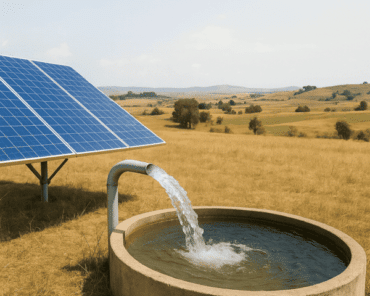
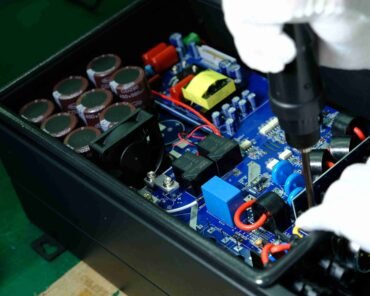
](https://hobertek.com/wp-content/uploads/2025/03/solar-pump-inverter-for-irrigation-efficient-water-pumping-solution-370x296.png)
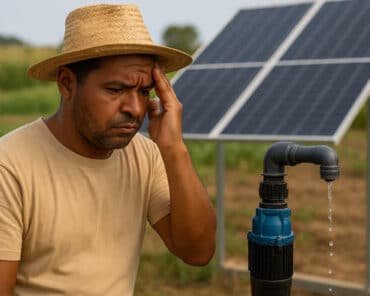
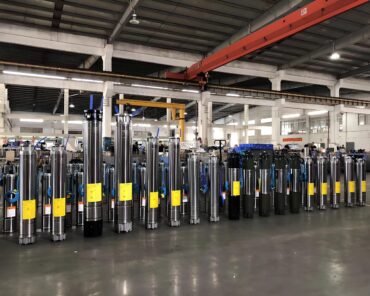
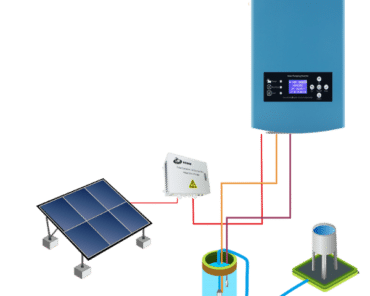
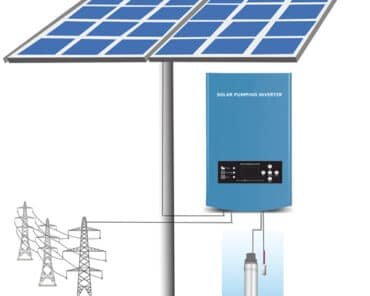
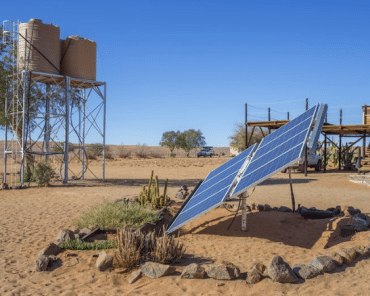
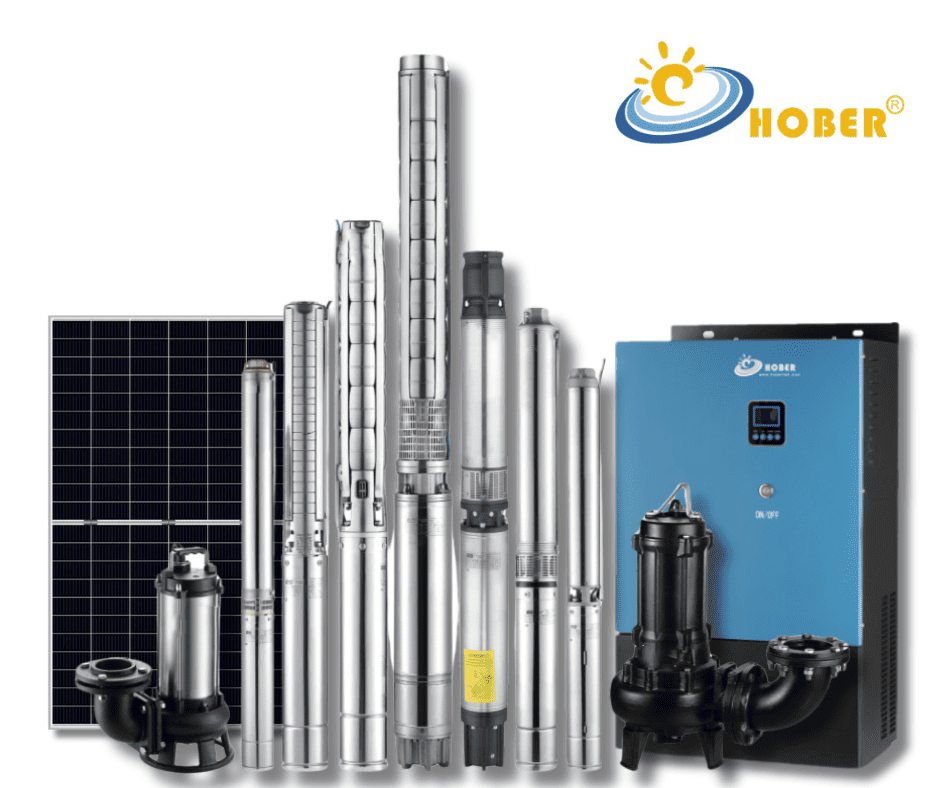
[…] care of your solar water pump is key to keeping it efficient. Regular maintenance helps you avoid unexpected breakdowns and costly repairs. Here’s what you should focus […]